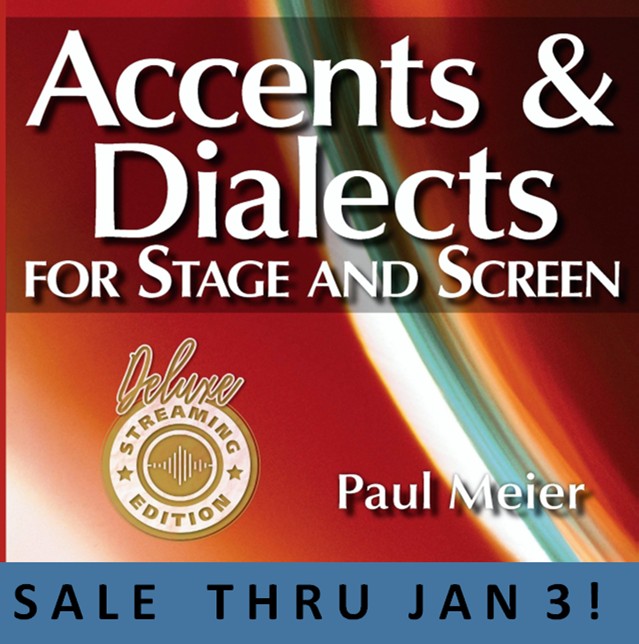New York 16
Listen to New York 16, a 41-year-old woman from Brooklyn, New York City, New York, United States. Click or tap the triangle-shaped play button to hear the subject.
Both as a courtesy and to comply with copyright law, please remember to credit IDEA for direct or indirect use of samples. IDEA is a free resource; please consider supporting us.
BIOGRAPHICAL INFORMATION
AGE: 41
DATE OF BIRTH (DD/MM/YYYY): 09/1967
PLACE OF BIRTH: New York City (Brooklyn)
GENDER: female
ETHNICITY: African-American, Caribbean
OCCUPATION: professor
EDUCATION: law degree
AREA(S) OF RESIDENCE OUTSIDE REPRESENTATIVE REGION FOR LONGER THAN SIX MONTHS:
The subject was raised in Brooklyn. However, she also lived in Charlottesville, Virginia, for seven years; Ithaca, New York, for one year; and in western Massachusetts for five years. At the time of this recording, subject was living in the Boston area.
OTHER INFLUENCES ON SPEECH:
Subject’s parents are Grenadian.
The text used in our recordings of scripted speech can be found by clicking here.
RECORDED BY: Bernie D. Jones
DATE OF RECORDING (DD/MM/YYYY): 20/05/2009
PHONETIC TRANSCRIPTION OF SCRIPTED SPEECH: N/A
TRANSCRIBED BY: N/A
DATE OF TRANSCRIPTION (DD/MM/YYYY): N/A
ORTHOGRAPHIC TRANSCRIPTION OF UNSCRIPTED SPEECH:
I’m thinking now of the unscripted portion of my narrative: My mom and dad are black middle-class Grenadians who have lived in the Caribbean section of Brooklyn, New York, since 1966. They are in their 70s. My mom worked in the same Caribbean community in which she lived. All of her friends and colleagues have been Caribbean people, whether from Grenada or elsewhere. My dad’s friends have primarily been Caribbean people, mainly Grenadians, but he worked in Manhattan, where most of his colleagues were not Caribbean people. So I grew up hearing Caribbean dialect; some of the children I spoke with, played with, spoke AAVE, since there were many African-American kids in the neighborhood. When I was 14, I went to high school in a different section of Brooklyn, populated primarily by white ethnic New Yorkers, those who spoke in the New York dialect and had the stereotypical “New York accent.” I also went to college and graduate school in NYC, but in Manhattan, again, surrounded by Caribbean speakers, speakers of AAVE and white ethnics, but there were also people of other groups — more Asians, Latinos and people from other parts of the city, state, country and world. As I think of it now, all the schools I attended, my teachers and professors seemed to be speakers of some form of what I understand to be General American. If anything, it was what I was taught, although I heard different dialects outside the classroom. When I was 28, I moved to Charlottesville, Virginia, and lived there for seven years. I got more exposure to the SAE dialect spoken by blacks and the whites who lived there. I then spent a year in Ithaca New York, then five years in western Massachusetts. I have lived in the Boston area since last year, and I’m becoming more familiar with the Boston accent. It does bother me when people hear I’m from New York and presume I should have a New York accent. In their minds, I should sound like Fran Drescher. I’m sure there are intonations to my speech that are typical of New Yorkers, but I don’t pronounce all my words exactly like how some New Yorkers do. I don’t say “cawfee” or ask for “shuggas.” So I’ll express some phrases I have heard my relatives say in Grenadian dialect. My mom is telling me about their doctor’s appointment this week: Yu daddy an me we goin doctor Wednesday. Ah go call yu an tell yu how we make out. She is admonishing me that I should call my aunt: Yu ain’ call yu tantie an them? Dad is joking with me in slang; he means to say, count me out, I’m not in this: Ah ain’ dey in yu business! So I would say that those are some phrases that indicate what I remember hearing from my relatives, my parents, with respect to Grenadian dialect, and I hope this has been helpful for you, and I have really been glad to have the chance to participate in this program. Thank you much.
TRANSCRIBED BY: Bernie D. Jones
DATE OF TRANSCRIPTION (DD/MM/YYYY): 20/05/2009
PHONETIC TRANSCRIPTION OF UNSCRIPTED SPEECH: N/A
TRANSCRIBED BY: N/A
DATE OF TRANSCRIPTION (DD/MM/YYYY): N/A
SCHOLARLY COMMENTARY:
If you are a dialect researcher, or an actor using this sample to develop your skill in the accent, please see my instruction manual at www.paulmeier.com. As the speaker in this sample is a unique individual, it is highly unlikely that she will conform to my analysis in every detail. But you will find it interesting and instructive to notice which of my “signature sounds” and “additional features” (always suggested only as commonly heard features of the accent) are widely used by most speakers of the dialect and which are subject to variation from individual to individual.
COMMENTARY BY: Paul Meier
DATE OF COMMENTARY (DD/MM/YYYY): 02/11/2016
The archive provides:
- Recordings of accent/dialect speakers from the region you select.
- Text of the speakers’ biographical details.
- Scholarly commentary and analysis in some cases.
- In most cases, an orthographic transcription of the speakers’ unscripted speech. In a small number of cases, you will also find a narrow phonetic transcription of the sample (see Phonetic Transcriptions for a complete list). The recordings average four minutes in length and feature both the reading of one of two standard passages, and some unscripted speech. The two passages are Comma Gets a Cure (currently our standard passage) and The Rainbow Passage (used in our earliest recordings).
For instructional materials or coaching in the accents and dialects represented here, please go to Other Dialect Services.
 IDEA: International Dialects of English Archive
IDEA: International Dialects of English Archive




